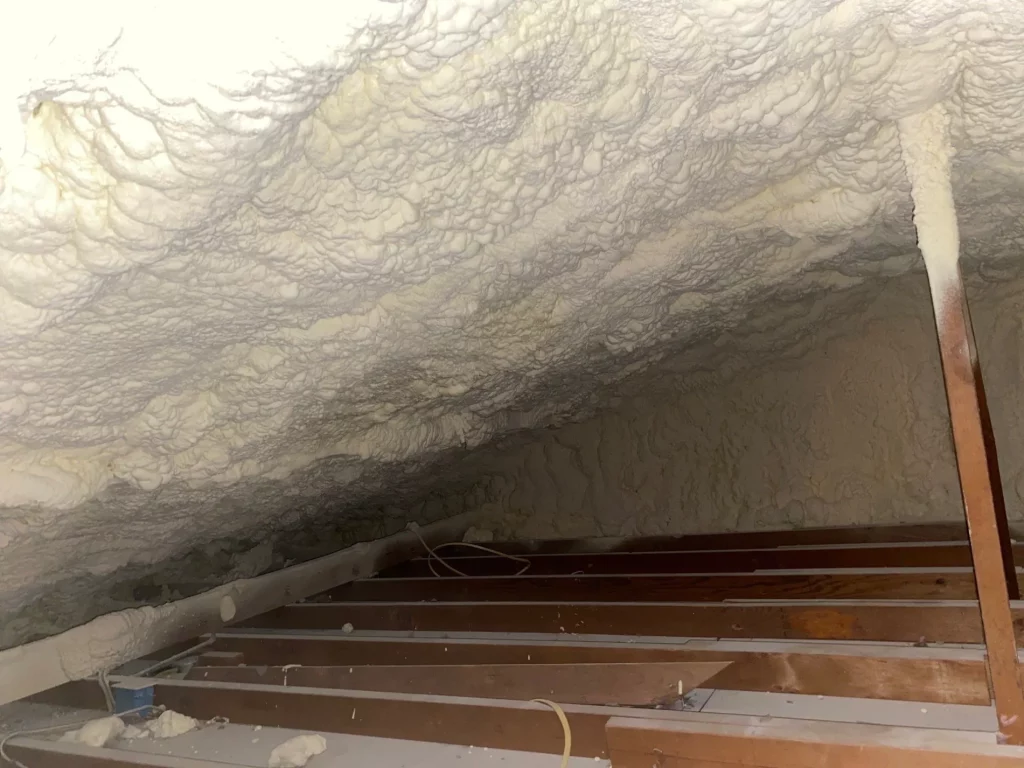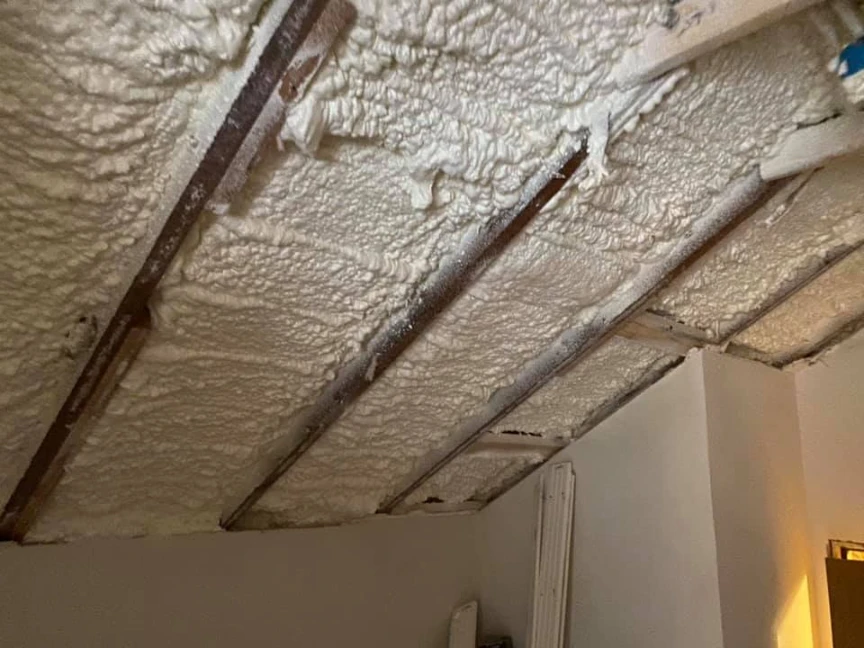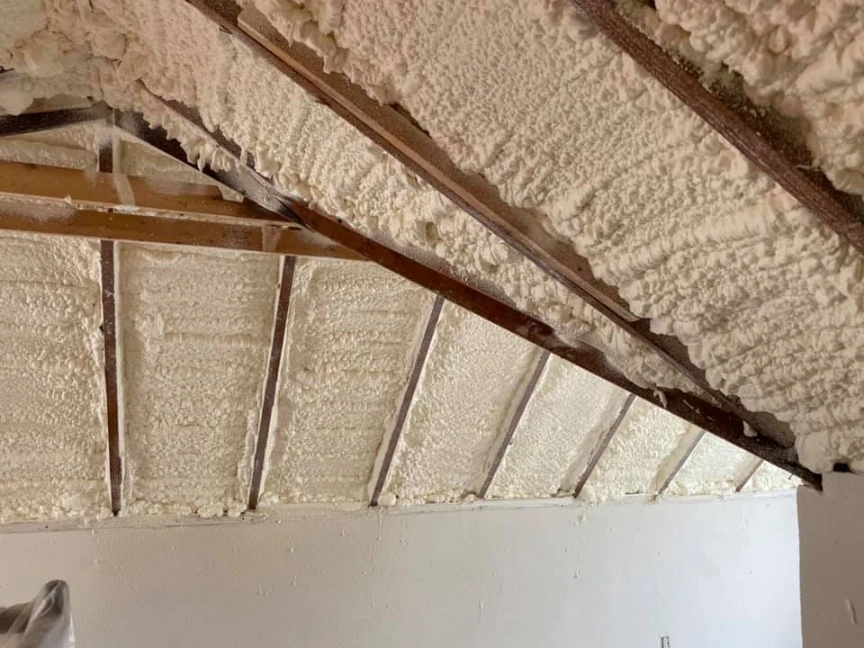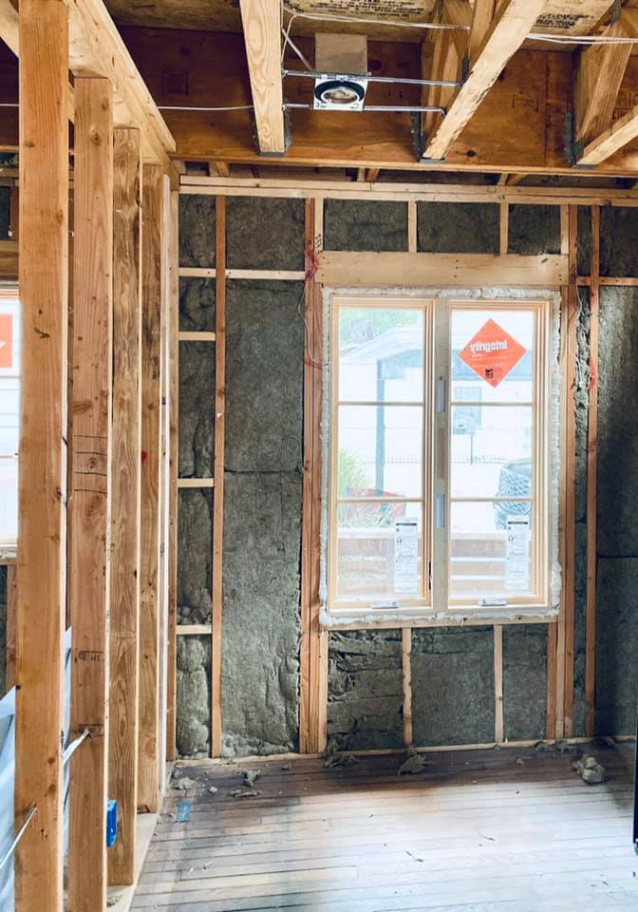Persistent drafts, surprisingly high energy bills, and rooms that are never quite the right temperature are common frustrations for property owners. These issues often point to a single root cause: inadequate or failing insulation. When traditional insulation materials underperform, they allow conditioned air to escape and outside elements to get in, creating a cycle of inefficiency and discomfort. Spray foam insulation directly addresses these gaps by creating a continuous, effective air and thermal barrier.
This guide explains the specific warning signs that suggest your building is losing energy and comfort due to poor insulation. Drawing on extensive field experience, Stellrr Insulation & Spray foam has identified the key indicators that spray foam can resolve. Understanding these signs will help you diagnose problems with your property’s performance and determine if an insulation upgrade is the right solution.
Telltale Signs of Insulation Failure
Problems with insulation manifest in several ways, from obvious physical discomfort to subtle clues you might overlook. These signs are your property’s way of telling you that its thermal envelope is compromised.
1. High Energy Bills
One of the most direct signs of poor insulation is a consistent and unexplained rise in heating and cooling costs. If your utility bills are climbing without a change in your habits or rates, it’s likely your HVAC system is working overtime to compensate for air leaks. A report from the U.S. Department of Energy highlights that proper insulation can save homeowners an average of 15% on heating and cooling costs. Spray foam seals the cracks and gaps that other insulation types can’t, stopping this energy waste at the source.
2. Drastic Temperature Fluctuations
Do some rooms feel like a sauna while others feel like a freezer? Inconsistent temperatures throughout a property are a classic symptom of a weak thermal boundary. Air is likely moving freely through walls and ceilings, causing hot and cold spots. Because spray foam expands to fill every opening, it stops this internal air movement, leading to more stable and uniform temperatures from room to room.
3. Persistent Drafts
Feeling a cold breeze near windows, doors, or electrical outlets, even when they are closed, means you have an air leakage problem. These drafts are signs that the building’s air barrier is not continuous. Spray foam insulation functions as both an insulator and an air sealant, closing off the tiny pathways that air uses to travel into and out of your building.
4. Ice Dams on the Roof
In colder climates, ice dams are a serious red flag. They form when heat escapes through the attic, melting the snow on the roof. The water then runs down to the colder eaves and refreezes, creating a blockage. This can lead to significant water damage to your roof, gutters, and insulation. By properly air sealing and insulating the attic floor or roofline, spray foam prevents the heat loss that causes ice dams in the first place.
Bonus Tip: You can often spot the source of attic heat loss on a frosty morning. Look for areas on your roof where the frost has melted first. These spots correspond to insulation gaps below.
Structural and Moisture-Related Indicators
Beyond comfort and energy use, poor insulation can cause physical damage to your property over time.
5. Moisture or Mold Problems
Condensation on walls, damp spots in the attic, or visible mold growth are serious signs of a moisture problem, often linked to insulation. When warm, moist indoor air meets cold surfaces within walls or attics, condensation occurs. Closed-cell spray foam acts as a vapor barrier, stopping moisture from passing through and condensing. This helps keep the building structure dry and prevents the conditions necessary for mold to grow.
6. Unwanted Pests
Insects and rodents can easily make their homes in traditional insulation like fiberglass batts. If you’re dealing with recurring pest issues, your insulation could be part of the problem. The rigid, dense structure of cured spray foam does not provide a food source or nesting material for pests. It also seals the cracks and holes they use to enter the property.
7. Old or Degraded Insulation
Insulation doesn’t last forever. If your property is older and still has its original insulation, it’s likely compressed, settled, or contaminated. Over time, materials like fiberglass and cellulose can lose their thermal resistance. A visual inspection of your attic or crawl space can reveal if the insulation is thin, patchy, or looks dirty, all signs that it’s no longer performing effectively. In contrast, information from the International Association of Certified Home Inspectors notes that spray foam insulation can last for more than 80 years, essentially the lifetime of the building.
Insulation Material Comparison
Different insulation types offer varying levels of performance. Here’s a quick comparison of common materials.
| Feature | Closed-Cell Spray Foam | Open-Cell Spray Foam | Fiberglass Batts | Blown-In Cellulose |
|---|---|---|---|---|
| R-Value per Inch | 6.0 – 7.0 | 3.5 – 3.8 | 3.1 – 4.3 | 3.2 – 3.8 |
| Air Seal | Excellent | Excellent | Poor | Fair |
| Moisture Barrier | Yes | No | No | No |
| Sound Dampening | Good | Excellent | Fair | Good |
| Lifespan | 80+ years | 80+ years | 15-25 years | 20-30 years |
Sound and Air Quality Clues
The right insulation can also improve your indoor environment in ways you might not expect.
8. Poor Indoor Air Quality
Dust, pollen, and other outdoor pollutants can enter your property through the same small gaps that cause drafts. If members of your household suffer from allergies that worsen indoors, it could be related to poor air sealing. Data from the Environmental Protection Agency shows that reducing air infiltration is a key strategy for improving indoor air quality. By creating an airtight seal, spray foam helps keep those pollutants outside.
9. Excessive Noise
Can you hear conversations from the street or noise from adjacent rooms too clearly? Sound travels easily through air. Traditional insulation doesn’t seal a space, leaving plenty of gaps for sound waves to pass through. The cellular structure of spray foam, particularly open-cell foam, is excellent at absorbing sound and dampening vibrations, creating a quieter indoor environment.
10. Cold Floors and Walls
If your floors and walls are cold to the touch during the winter, it’s a sign that they lack sufficient insulation. This is especially common in rooms situated over unconditioned spaces like garages or crawl spaces. Spray foam can be applied to the underside of floors and within wall cavities to stop this thermal transfer, making your living spaces much more comfortable.
11. Renovations or New Additions
Any time you open up walls or build a new addition is a perfect opportunity to upgrade your insulation. Adding spray foam during a renovation is far easier and more cost-effective than trying to retrofit it later. It ensures your new space is as energy-efficient and comfortable as possible from day one.
Bonus Tip: When finishing a basement, using closed-cell spray foam on the concrete walls before framing provides insulation, a vapor barrier, and an air seal in one step, protecting the space from moisture issues common in below-grade areas.
Things to Consider Before Making a Decision
Choosing the right insulation involves more than just identifying problems. You should also evaluate a few key factors about your property and goals.
- Climate Zone: The insulation needs in a cold climate are different from those in a hot, humid one. Closed-cell spray foam is often preferred in colder regions for its high R-value and vapor barrier properties, while open-cell can be a good choice in warmer climates.
- Building Age and Condition: Older properties often have many more air leaks and irregular framing, making spray foam’s air-sealing ability particularly valuable.
- Budget and Long-Term Value: While spray foam has a higher upfront cost than some other materials, it can deliver greater long-term savings through reduced energy bills and increased property durability. It’s an investment in the building’s performance.
- Project Area: The location of the insulation matters. Attics, crawl spaces, and rim joists are critical areas for air sealing and are often top priorities for an insulation upgrade.

Frequently Asked Questions
What is the difference between open-cell and closed-cell spray foam?
Open-cell foam has a softer, more flexible texture because its cells are not fully encapsulated. It is an excellent air barrier and sound dampener but is permeable to vapor. Closed-cell foam is rigid and dense, with completely sealed cells. This makes it an air barrier, vapor barrier, and a more powerful insulator per inch.
How long does spray foam insulation last?
Spray foam is an inert, long-lasting material. When installed properly, it does not sag, settle, or degrade over time. It maintains its performance for the life of the building.
Does spray foam need to be ventilated?
A proper ventilation strategy is important for any well-insulated, airtight home. Your insulation contractor should work with you to ensure your building meets ventilation codes, often with the help of mechanical systems like an HRV or ERV to ensure fresh, healthy air exchange.
Is spray foam safe for my family and pets?
During installation, the area must be vacated by anyone without proper personal protective equipment. Once the foam has cured (typically within 24 hours), it becomes a stable, inert plastic and is considered safe for occupancy.
Final Thoughts
If you recognize several of these 11 signs in your property, your insulation is likely not doing its job. Ignoring issues like high energy bills, drafts, and moisture can lead to greater expense and discomfort down the road. By creating a complete air and thermal seal, spray foam insulation offers a permanent solution to these common building performance problems. The first step is to accurately assess your property’s specific needs to determine the most effective approach.
Stellrr Insulation & Spray Foam expanded its spray foam services to meet growing regional demand, reflecting the company’s commitment to energy-efficient solutions across Texas. Click here to learn more.
Get a Professional Assessment
For a detailed evaluation of your property’s insulation needs, it’s best to consult with certified professionals. Our team at Stellrr Insulation & Spray Foam can help identify problem areas and recommend the right solutions. Contact us at (512) 710-2839 or send an email to info@stellrr.com to discuss your project.
Sources
- U.S. Department of Energy – Provides information from the federal government on the benefits of insulation and how it contributes to energy savings in homes.
- Environmental Protection Agency – Offers guidance and research on the sources of indoor air pollutants and strategies for improving air quality, including air sealing.
- International Association of Certified Home Inspectors – An article from a leading home inspector association detailing the properties of spray foam insulation, including its long-term durability and lifespan.





